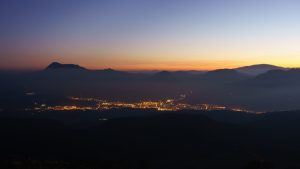 Mexico is a top destination for people looking for world-class entertainment. The country has a long, rich history of producing notable stars in entertainment, including Ricardo Montalban, Carlos Santana, and Dolores del Rio. In fact, Dolores del Rio was widely regarded as being the first Latino woman to make it in Hollywood. Google Doodle honored her recently by showcasing an illustration of del Rio surrounded by flowers on Google’s homepage. If you’re a film buff, consider visiting del Rio’s birthplace during your visit to Mexico. Durango City is impressive any time of the year, but consider planning your trip during mid-to late-July to early August for the annual festival, and be sure to check out other exciting festivals happening around the country.
Mexico is a top destination for people looking for world-class entertainment. The country has a long, rich history of producing notable stars in entertainment, including Ricardo Montalban, Carlos Santana, and Dolores del Rio. In fact, Dolores del Rio was widely regarded as being the first Latino woman to make it in Hollywood. Google Doodle honored her recently by showcasing an illustration of del Rio surrounded by flowers on Google’s homepage. If you’re a film buff, consider visiting del Rio’s birthplace during your visit to Mexico. Durango City is impressive any time of the year, but consider planning your trip during mid-to late-July to early August for the annual festival, and be sure to check out other exciting festivals happening around the country.
Explore Dolores del Rio’s birthplace: Durango City
Durango City, also known as Victoria de Durango and Ciudad de Durango, is the capital of the Mexican state of Durango. This historic city of about half a million people was founded in 1563 by explorer Francisco de Ibarra. It’s a beautiful area to stroll through, with historic architecture that speaks to the city’s Barcelona, Florence, Madrid, and Paris influences. The richly styled Catedral Basilica de Durango (cathedral), which dates back to 1695, is widely considered to be among the most impressive architectural wonders in northern Mexico.
National Festival of Durango
Each summer, Durango City’s population swells to about 1.5 million, as visitors flock here for the renowned Feria Nacional de Durango (National Festival of Durango). This month-long event has been held here every year since 1929, which means it’s extremely likely that Dolores del Rio would have enjoyed the festivities. The schedule of events is subject to change each year, but generally includes music concerts, equestrian events, and other cultural attractions.
Mexican Film Festival
Earlier in the summer, from late June to the beginning of July, Durango City holds its annual Mexican Film Festival. Shorts, documentaries, and feature-length films compete for top honors. There’s also a category exclusively for short films produced within the state of Durango, called “Made in Durango.”
Popular events in the surrounding areas
Anxious for more exciting festival options? Take a short, three-hour trip from Durango and head south to Zacatecas in central Mexico. Zacatecas is an enchanting, historic town with roots as a 16th century silver mining town. It’s also famed for its lovely pink quarry stone, and it’s been designated as a World Heritage Site.
If you visit in April, check out the Festival Cultural de Zacatecas. It’s an exuberant celebration of Mexico’s cultural heritage, featuring music, dance, films, art exhibits, theatrical performances, and much more. If you visit in August, you can attend the international folklore festival—the Festival Zacatecas del Folclor Internacional, which features traditional dance, cuisine, and crafts from various states in Mexico and countries around the world.
Plan your trip with Sea Side Reservations
Sea Side Reservations invites Mexican culture aficionados, festival enthusiasts, and sun lovers alike to plan the trip of a lifetime with our luxury accommodation services. We connect vacationers to top resorts, hotels, and villa rentals around the country, and our onsite property managers are always available to support the comfort and safety of our guests.

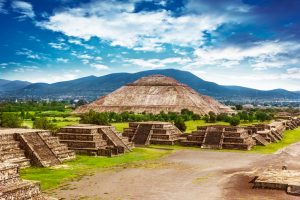 Torrential rains saturated the grounds at Teotihuacan (pronounce it tay-oh-tee-wah-KAHN) on an autumn day in 2003. The pre-Aztec ruins, located just 30 miles from Mexico City, became so waterlogged that a gapping sinkhole opened up at the dig site at the base of the Temple of the Plumed Serpent—a large pyramid at the southeast sector of Teotihuacan. Sergio Gomez, the archaeologist who discovered the mess, later recalled thinking, “How exactly are we going to fix this?” After lowering himself down into the hole via rope, Gomez realized that the “mess” he’d been fretting over was actually one of the most significant discoveries at Teotihuacan. The painstaking explorations that would follow yielded a few puzzles that have yet to be solved—namely, the existence of liquid mercury and the formation of hundreds of mysterious yellow orbs.
Torrential rains saturated the grounds at Teotihuacan (pronounce it tay-oh-tee-wah-KAHN) on an autumn day in 2003. The pre-Aztec ruins, located just 30 miles from Mexico City, became so waterlogged that a gapping sinkhole opened up at the dig site at the base of the Temple of the Plumed Serpent—a large pyramid at the southeast sector of Teotihuacan. Sergio Gomez, the archaeologist who discovered the mess, later recalled thinking, “How exactly are we going to fix this?” After lowering himself down into the hole via rope, Gomez realized that the “mess” he’d been fretting over was actually one of the most significant discoveries at Teotihuacan. The painstaking explorations that would follow yielded a few puzzles that have yet to be solved—namely, the existence of liquid mercury and the formation of hundreds of mysterious yellow orbs.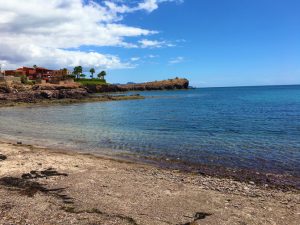 With its stunning desert-meets-sea landscape,
With its stunning desert-meets-sea landscape,  For most Mexicans, futbol (soccer in the U.S.) is a way of life. Indeed, soccer is the veritable king of sports south of the border, where passionate fans flock to support their favorite leagues, whether playing in a qualifying match or a friendly. Either way, expect lots of heated cheering, jeering and rapid-fire commentary if you’re lucky enough to be in the stands.
For most Mexicans, futbol (soccer in the U.S.) is a way of life. Indeed, soccer is the veritable king of sports south of the border, where passionate fans flock to support their favorite leagues, whether playing in a qualifying match or a friendly. Either way, expect lots of heated cheering, jeering and rapid-fire commentary if you’re lucky enough to be in the stands.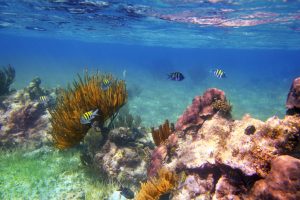 Coral reefs are some of the most astounding natural features on Earth. Healthy reefs are teaming with activity, with all sorts of fish and marine life going about their business. But the coral itself is also alive. Corals look like pretty rocks and they act like plants, since they’re attached to the ocean floor, but they’re actually animals. Each coral branch contains thousands of small invertebrates called polyps, and these tiny creatures thrive in warm, tropical waters. Mexico is a favorite destination for snorkelers, divers, and coral reef enthusiasts because it offers the perfect environment for coral to flourish. When you book your next trip to Mexico, consider including some of these top diving spots in your itinerary.
Coral reefs are some of the most astounding natural features on Earth. Healthy reefs are teaming with activity, with all sorts of fish and marine life going about their business. But the coral itself is also alive. Corals look like pretty rocks and they act like plants, since they’re attached to the ocean floor, but they’re actually animals. Each coral branch contains thousands of small invertebrates called polyps, and these tiny creatures thrive in warm, tropical waters. Mexico is a favorite destination for snorkelers, divers, and coral reef enthusiasts because it offers the perfect environment for coral to flourish. When you book your next trip to Mexico, consider including some of these top diving spots in your itinerary.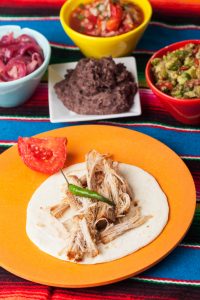 Fine food is as good a reason to visit the Yucatan Peninsula as any! The culinary delights of this region borrow influence from Mayan, Caribbean, Spanish, African, Middle Eastern, and Mexican cuisines. The corn, chocolate, honey, venison, wild turkey, squash, cucumbers, chiles, and tomatoes you see in many Yucatan dishes are remnants of traditional Mayan cooking. Pork and Seville oranges worked their way into the cuisine much later, when Spanish settlers arrived in the 16
Fine food is as good a reason to visit the Yucatan Peninsula as any! The culinary delights of this region borrow influence from Mayan, Caribbean, Spanish, African, Middle Eastern, and Mexican cuisines. The corn, chocolate, honey, venison, wild turkey, squash, cucumbers, chiles, and tomatoes you see in many Yucatan dishes are remnants of traditional Mayan cooking. Pork and Seville oranges worked their way into the cuisine much later, when Spanish settlers arrived in the 16 There’s good reason why so many outdoor enthusiasts flock to Mexico: the country’s diverse landscapes offer epic hiking opportunities through pine woods, mountain passes and sultry jungles. Even more exciting is the fact that pristine wilderness, snow capped peaks and lush rainforests are all within a three-hour drive from the sprawling metropolis of Mexico City.
There’s good reason why so many outdoor enthusiasts flock to Mexico: the country’s diverse landscapes offer epic hiking opportunities through pine woods, mountain passes and sultry jungles. Even more exciting is the fact that pristine wilderness, snow capped peaks and lush rainforests are all within a three-hour drive from the sprawling metropolis of Mexico City.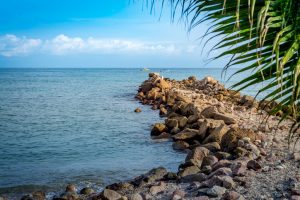 Riviera Nayarit itself is an “off-the-beaten-path” destination within Mexico. Scarcely a decade ago, the 190 miles just north of bustling Puerto Vallarta was a hideaway for surfers and Hollywood A-listers looking to stay under the radar. “Travelers seeking a more immersive experience of authentic Mexico will certainly find a trip to northern Nayarit to be a breath of fresh air,” describes Marc Murphy, managing director of the Riviera Nayarit Convention & Visitors Bureau. Here are some of our travel coordinators’ favorite hidden gems.
Riviera Nayarit itself is an “off-the-beaten-path” destination within Mexico. Scarcely a decade ago, the 190 miles just north of bustling Puerto Vallarta was a hideaway for surfers and Hollywood A-listers looking to stay under the radar. “Travelers seeking a more immersive experience of authentic Mexico will certainly find a trip to northern Nayarit to be a breath of fresh air,” describes Marc Murphy, managing director of the Riviera Nayarit Convention & Visitors Bureau. Here are some of our travel coordinators’ favorite hidden gems. For many Americans, Independence Day conjures up images of backyard barbecues, hot dog eating contests, cookouts with family and friends, and spectacular firework displays. If you happen to find yourself south of the border this 4
For many Americans, Independence Day conjures up images of backyard barbecues, hot dog eating contests, cookouts with family and friends, and spectacular firework displays. If you happen to find yourself south of the border this 4